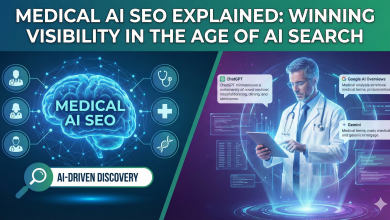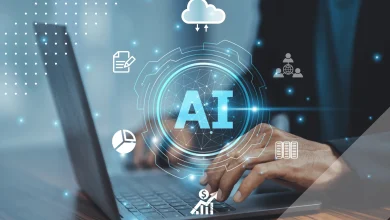
In today’s tech world, data powers most new inventions. Machine learning, automated systems, or forecasting models – all rely on info to push progress while helping companies work quickly and better. With AI changing fast, gathering data isn’t the same anymore. Smart algorithms combined with high-speed tracking are flipping how firms collect insights, study actions, and adapt instantly when markets shift.
This piece looks into AI changing the way we gather data – what’s at stake, what hurdles show up along the way, and also what new tools are popping up to redefine how machines understand info online.
The Shift Toward Smarter Data Collection
Back in the day, gathering data meant lots of hands-on work, fixed spreadsheets, also basic tools. Those ways took forever, but still ended up giving old or patchy results.
Today, AI-driven data collection tools can:
- Pull data instantly from various online spots using smart tools that connect everywhere instead of just one place
- Analyze big chunks of info real quick using smart tools instead of waiting around
- Pick actions fast by spotting how things usually go
- Adjust automatically when surroundings shift – no need for people to step in
This change lets companies across sectors – like banking, stores, health care, online safety, or shipping – use solid info to make smarter moves. While it’s now easier to act on reliable data, each field applies these gains in its own way. So instead of guessing, firms rely more on clear signals that guide their plans forward.
AI-Powered Web Scraping: Faster and More Intelligent
One major shift in grabbing online info? It’s AI-driven scraping. Old-school scripts usually fail once a site redesigns its setup – these new tools learn on the fly instead. Because they adjust automatically, they keep pulling data without hiccups, even if page designs change overnight.
Features of AI-powered web scraping include:
- Dynamic content extraction from JavaScript-heavy websites
- Spotting patterns helps find key parts on a web page
- Natural language processing helps understand written words by using computer systems that figure out meaning from text instead of just reading it literally
- Self-tunes to dodge interruptions or fix mistakes
Since these tools keep changing, yet staying strong, their precision improves while handling bigger tasks without failing.
The Role of Automation in Data Gathering
AI-driven automation has eliminated many repetitive tasks once handled manually. Automated data pipelines collect, filter, and process information from various digital sources without human supervision.
Examples include:
- Continuous monitoring of product prices across e-commerce platforms
- Automatic gathering of competitor insights
- Real-time tracking of cybersecurity threats
- Automated social media sentiment analysis
By reducing human involvement, automation minimizes errors, saves time, and ensures that data remains current and relevant.
Protecting Data Collection Systems with Smart IP Rotation
When sites boost their defenses against bots or heavy scraping, AI steps in to keep data flowing without hiccups. By switching IPs smartly, it spreads out requests from various spots – so you’re less likely to get flagged.
This is the point when private proxy setups or smart switching tools really matter – helping gather info the right way. While one option works alone, another kicks in only if needed, keeping things smooth without breaking rules. Many businesses rely on responsible proxy solutions—for example, services like lightningproxies.net—to support large-scale data extraction while maintaining anonymity, reducing blocks, and balancing traffic more effectively.
The integration of proxy networks with AI-based scraping solutions ensures data remains accessible, even on highly protected websites.
AI and Ethical Data Collection
While AI enables faster and more extensive data gathering, it also raises important ethical considerations. Businesses must prioritize transparency, user privacy, and compliance with global data regulations.
Key ethical principles include:
- Respecting user consent
- Avoiding intrusive data harvesting techniques
- Ensuring collected data is secured and encrypted
- Following GDPR, CCPA, and other international privacy laws
- Using data responsibly and avoiding bias
AI tools need to support better data habits instead of hurting them. With tech evolving, moral guidelines will shape how firms handle online information.
Machine Learning and Predictive Data Insights
AI not only gathers data—it also interprets it. Through machine learning algorithms, systems can process vast amounts of information and generate predictions based on historical patterns.
Applications include:
- Consumer behavior forecasting
- Financial market trend prediction
- Predictive maintenance in industrial settings
- Fraud detection and risk assessment
- Healthcare diagnostic modeling
By collecting and analyzing data simultaneously, AI drastically improves decision-making speed and accuracy, giving businesses a competitive advantage.
Challenges in AI-Driven Data Collection
Despite its advantages, AI-based data collection comes with challenges:
1. Data Quality Issues
AI systems rely on high-quality input. Incomplete or inaccurate data can lead to misleading insights.
2. Algorithmic Bias
AI models can unintentionally favor certain data patterns, resulting in skewed outcomes if not carefully monitored.
3. Increasing Website Security
Websites deploy CAPTCHAs, rate limits, and advanced bot-detection systems, making automated data collection more complex.
4. Privacy Concerns
Gathering large amounts of user data risks violating privacy if not handled responsibly.
5. Infrastructure Costs
Running AI systems with large-scale data pipelines requires robust servers, storage, and continuous maintenance.
These challenges highlight the need for balance between innovation and regulation in the digital era.
The Future of AI and Data Collection
The next phase of AI-driven data collection will focus on:
- Greater automation with autonomous data systems
- Stronger data privacy protections through encryption and federated learning
- Real-time, context-aware data gathering powered by deep learning
- Integration of edge computing to reduce latency and boost efficiency
- AI models capable of reasoning, not just pattern recognition
As AI becomes more sophisticated, data collection will evolve from simple extraction to a fully intelligent ecosystem capable of interpreting and acting on information instantly.
Conclusion
AI’s changing how we gather data – making old ways quicker, smarter, automatic, and more flexible. Firms now process bigger piles of info, react sooner when markets shift, and find patterns once out of reach. Still, as tools get sharper, solid ethics, clear privacy rules, and staying mindful online need to go hand in hand.
The future of gathering info comes from mixing AI tools with clever machines that work on their own, along with strong tech setups – linking things better so the online world makes sense for all



